|
|
|
Honoring African Americans Who Helped Shape the Nation
Black History Month, also known as African Americans-History
is a month in which we honor many who have helped shaped the
United States. In honor of this celebration, we wanted to
recognize several historical figures who showed courage,
resilience, and, at times, risked their lives for the
benefit of others.
|
|
Harriet Tubman
Born into slavery, Harriet Tubman escaped and made 13
missions to rescue approximately 70 enslaved people using
the Underground Railroad. How much do you know about this
revolutionary woman? Here are a few facts: Harriet was born
in an area in Maryland where the lines between slavery and
freedom were often blurred. Her first husband John was a
free man. Harriet earned the nickname "Moses" after the
prophet Moses in the Bible who led his people to freedom. In
all of her journeys she "never lost a single passenger."
Harriet wore many hats: She was an active proponent of
women's suffrage and worked alongside women such as Susan B.
Anthony. During the civil war, Harriet also worked for the
Union Army as a cook, a nurse and even a spy. |
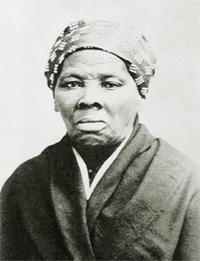 |
|
|
|
|
Sojourner Truth
In 1851, Truth began a lecture tour that included a women’s
rights conference in Akron, Ohio, where she delivered her
famous “Ain’t I a Woman?” speech. In it, she challenged
prevailing notions of racial and gender inferiority and
inequality by reminding listeners of her combined strength
(Truth was nearly six feet tall) and female status. Truth
ultimately split with Douglass, who believed suffrage for
formerly enslaved men should come before women’s suffrage;
she thought both should occur simultaneously.
When the Civil War started, Truth urged young men to join the
Union cause and organized supplies for black troops. After
the war, she was honored with an invitation to the White
House and became involved with the Freedmen’s Bureau,
helping freed slaves find jobs and build new lives. While in
Washington, DC, she lobbied against segregation, and in the
mid 1860s, when a streetcar conductor tried to violently
block her from riding, she ensured his arrest and won her
subsequent case. |
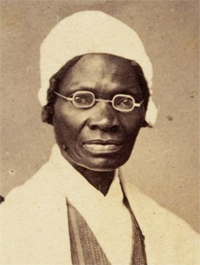 |
|
|
|
|
Senator Hiram Revels
On February 25, 1870, visitors in the Senate galleries burst into
applause as senator-elect Hiram Revels, a Republican from
Mississippi, entered the chamber to take his oath of office.
Those present knew that they were witnessing an event of
great historical significance. Revels was about to become
the first African American to serve in the Senate.
Born 42 years earlier to free black parents in Fayetteville,
North Carolina, Revels became an educator and minister of
the African Methodist Episcopal Church. During the Civil
War, he helped form regiments of African American soldiers
and established schools for freed slaves. After the war,
Revels moved to Mississippi, where he won election to the
state senate. In recognition of his hard work and leadership
skills, his legislative colleagues elected him to one of
Mississippi's vacant U.S. Senate seats as that state
prepared to rejoin the Union.
When Hiram Revels' brief term ended on March 3, 1871, he returned
to Mississippi, where he later became president of Alcorn
College. |
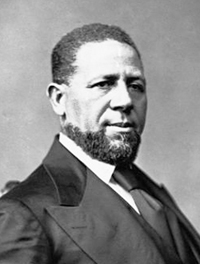 |
|
|
|
|
John Parker
Born a slave in Norfolk, Virginia, John Parker was sold at
the age of eight to a doctor in Mobile, Alabama. The
doctor's family taught Parker to read and write and allowed
him to apprentice in an iron foundry where he was
compensated and permitted to keep some of his earnings.
Persuading an elderly female patient of the doctor's to
purchase him, Parker, at the age of 18, bought his freedom
from the woman with money earned from his apprenticeship.
Parker moved to southern Ohio and around 1853 established a
successful foundry behind his home in Ripley. Patenting a
number of inventions from his foundry, Parker was one of
only a few African Americans to obtain a U.S. patent in the
19th century. Though busy with his business, Parker was also
active in the Underground Railroad and is believed to have
assisted many slaves to escape from the Kentucky side of the
Ohio River. Parker, who was well-known by regional
slave-catchers, risked his own life when he secreted himself
back into slave territory to lead fugitive slaves to safety
in Ripley. |
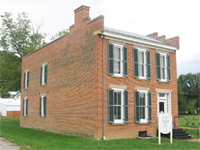 |
|
|
|
|
Mae Jemison
Mae C. Jemison (born October 17, 1956) is an American
astronaut and physician who, on June 4, 1987, became the
first African-American woman to be admitted into NASA’s
astronaut training program. On September 12, 1992, Jemison
finally flew into space with six other astronauts aboard
the Endeavour on
mission STS47, becoming the first African-American woman in
space. In recognition of her accomplishments, Jemison has
received several awards and honorary doctorates. |
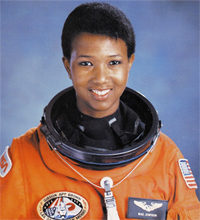 |
|
|
|
|
Garrett Morgan
Garrett Augustus Morgan
was an African
American inventor and
businessman as well as an influential political leader.
Morgan's most notable invention was the gas
mask originally
named "smoke
hood". Morgan
also discovered and developed a chemical hair-processing and
straightening solution. He created a successful company based
on the discovery along with a complete line of hair-care
products.
The first black man in Cleveland to own a car, Morgan worked
on his mechanical skills and developed a friction drive
clutch. Then, in 1923, he created a new kind of traffic
signal, one with a warning light to alert drivers that they
would need to stop, after witnessing a carriage accident at
a particularly problematic intersection in the city. |
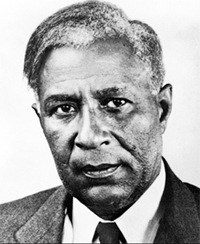 |
|
|
|
|
|
|
|
|
|
|
|
Copyright © 2019 by [The Sojourner's Truth]. All rights reserved.
Revised:
02/14/19 07:45:39 -0500. |
|
|
More
Articles....
Toledo Library Focuses on Teaching the Next Generation
Coding
Why Vocational Education is Critical for Many Young People
Big Brothers Big Sisters’ Third Annual Recognition Banquet
Single Payer Health Care in Ohio – Sunday, February 17
The Book of
Ingeniously Daring Chemistry
by Sean Connolly
|
|
|
|
|
|
Back to Home Page |
|
|
|
|
|
|